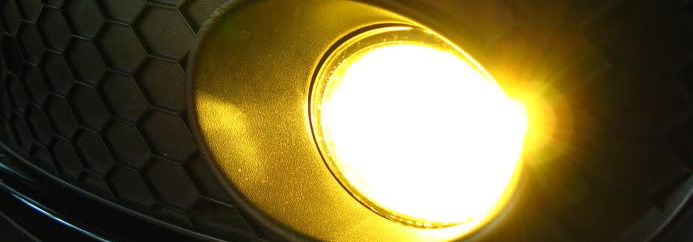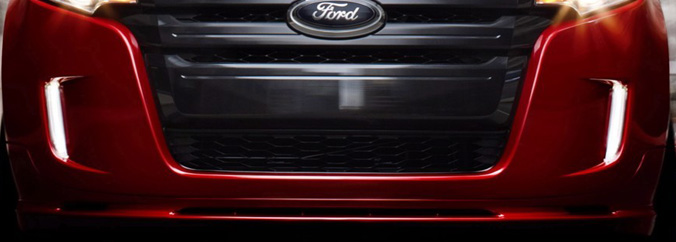G.Noble
Editor/Reporter
CheersandGears.com
27th February, 2012
Fabulous Flops is a monthly series profiling some of the spectacular failures in the automotive industry. The automotive industry is by nature an innovator, but sometimes those innovative ideas are taken out of the oven before they are done cooking, others fall victim to poor timing. Today, we’re going to go after one of those rare flops where the idea was half-baked and still somehow managed to be popular.
Since the dawn of the automobile, mankind has found himself thinking of new ways to brave and drive in the elements. After all, driving isn’t the easiest thing to do when it’s pouring an inch of rain every hour, the wind is blowing debris and bugs into your teeth, and the bitter winter cold has frozen your car into a popsicle. So it’s understandable that car manufacturers introduced new features over the years to combat Mother Nature. It’s why cars have roofs. It’s why cars have windshields and wipers to keep them visible. It’s why cars have heaters to keep the interior warm and defrosters to blast the windows clear when it’s a little frosty outside.
While some of those features are what makes most cars so livable during the worst of what the weather has to throw at us, others haven’t made much of a difference at all. For example, many tire manufacturers advertise all season tires that will perform the same regardless of the weather. The problem is that actually means they perform terribly all year round. The worst offender, though, is probably none other than the fog light.
Yes, that’s right. The fog light is the single most useless option that you can buy on a car today next to pin striping. I’m sure you must be thinking, “You’ve really lost it on this one. I have fog lights on my car and I think they were well worth the $500 and change I spent to get them.” Well, guess what? You’re wrong and you’re about to learn why.
First, let’s have a little history lesson (and just to warn you, it's a snoozer). The first fog light was first introduced as an option on some late 1930's Cadillacs. Since low headlight beams from that time and years prior weren’t the brightest ever produced, they didn’t lend themselves all that well to lighting the foreground of the road very well, especially in driving situations with poor visibility such as fog. Cadillac therefore decided to fit two auxiliary lights to the front of the car that were aimed very low at the ground to augment the low beams and light the immediate foreground of the road to the driver. This would make the edges of the road immediately in front of the car easier to see.
It was admirable thinking, but Cadillac’s first fog light -- as well as the subsequent designs competitors would cook up later -- were flawed designs from the get-go mainly because they were all sealed with a selective yellow lens and continued to be for years. So why a selective yellow lens?
The answer to that question opens up a massive, brand new can of worms to dig through, but it all started with the French back in the early 1930s. For tactical reasons, the French government at the time thought that it might would be a good idea to be able to distinguish which cars traveling the French roadways at night were native to the country and which cars were not. They also didn’t want any required changes to diminish highway safety and sought to improve it if possible. The solution they came up with was to remove all traces of blue light from the spectrum of their car’s headlamps. The end result was a headlamp that cast an almost pure yellow light.
While it is true that French motorists thought that the new yellow headlamps had less glare in poor weather conditions, it wasn’t because that particular color would naturally scatter less, for example, on the big, fat water molecules that make up roadway fog like some self-proclaimed scientific minds like to claim. No, instead it was mainly due in part to the fact that the design burned at a lower intensity rate in comparison to a light that projected mostly white light. That means the amount of light a selective yellow beam produces is up to thirty percent less than a white beam, which defeats the goal of increasing visibility.
With all of this in mind it is curious that Cadillac (and ostensibly all the pursing automakers) chose a selective yellow lens and continued to use it for years. However, the answer here this time isn’t so complex. Chances are Cadillac simply wanted drivers to associate the color of a functioning fog lamp with the word “caution.” After all, drivers in America already associated yellow with that word from road signs, so tying it in with unsavory driving conditions only seemed like the logical thing to do. Once again Cadillac’s admirable thinking didn’t exactly pan out.
The selective yellow lens wasn’t to last forever, though. In fact, every design feature that would constitute a fog lamp since its creation -- the lens, the diameter, the height, the width, the shape, the bulbs -- would sporadically change over the years, with a few gallant attempts at making improvements being canceled out by stupid ideas and other changes making something already terrible even worse. The yellow lens would eventually give way to clear lenses that boosted the light output back to a normal, useful standard, but when automakers made that change many fog lights were no longer big and round and instead were small bars. When fog lights finally became round again they still were too small to really work. It’s not that the old, larger diameter of vintage fog lights made any difference in their case anyway; they were incandescent … which reminds me, when the bulbs switched from incandescent to halogen ones, the increased light output only helped to increase glare. Some automotive savants these days like to swap high-intensity discharge bulbs into their fogs light socket, which only increases glare further.
There’s also another problem with these damned things -- you can never find a set that’s really aimed properly. Ideally, a fog lamp should be aimed even lower than your low beams, as stated earlier, with the top of the beam cutting off directly at the bottom of the low beam. Most fogs instead can’t be aimed quite that low because of flawed bracket designs and uncooperative bumpers. This makes for fog lamps that instead are aimed to a degree too close to the low beams, making any difference unnoticeable to the driver. Some fogs are even aimed far too high, which only serves to blind other drivers.
So from a design standpoint, fog lamps have been a flop from the very start and have never gained any ground in being something truly useful. Nowadays, automakers like Ford have essentially given up on making a useful design but acknowledge the fact buyers want pointless lights attached to the front of their car. The new fangled light pipe fangs on several new Ford models amount to little more than luminescent bling. Remember the opera lights on cars from the '70s and '80s? That's all these amount to in terms of function.
The buck doesn’t stop with the stupid baubles automakers attach to the front of their cars either. The Europeans don't stop with just front mounted fog lights, they do it to the south end of the car as well. Although you might be concerned at first sight, don’t worry, the driver in front of you doesn’t have an electrical issue with his Audi. No, those are rear fog lights, which begs the question, “Why?” Someone in favor of the idea will say that it increases the visibility of the taillights of a car to following drivers in poor visibility. While that may be somewhat true, it can also serve to blind following drivers as well since, of course, they’re pretty much in your direct line of vision. Having these fog lights hasn't stopped any of the pileups of 50 plus cars in France.
We’ve established that fog lamps are useless, poorly designed, and have absolutely no hope of becoming something useful. To add insult to injury, these things are almost always used incorrectly by almost everyone everywhere. Don’t believe me? Next time you’re out driving during a clear, calm night, try and count just how many drivers turn their fogs on for absolutely no good reason if you can. This misuse also can also lead to serious accidents. A recent study from British insurance company Swiftcover states that 300,000 claims or more last year involved someone using inappropriately turning on their fog lamps in clear conditions. That’s also not to mention that this is coming from a country where the local authorities don’t care a bit to write you a ticket for using them when you’re not supposed to, so you can only wonder what the count tallies up to here in America.
Let’s just face the simple truth: we don’t need fog lamps and considering how much better basic modern automotive lighting systems are today versus what we had over eighty years ago, we probably never will. Adaptive headlights that can help you see around corners are far more likely to prevent an accident than any fog lamp will. Plus, that extra five-hundred bucks you spent to get those stupid things could’ve been better used on something else more useful for your car, like a nicer stereo, heated seats, or better engine option. If none of those things sound appealing to you, keeping that extra money in your wallet instead of throwing it away on the front of your car will only serve to keep your monthly payment down, even if it is by just a few dollars. It’s as easy as skipping over checking off that box off the next time you buy your brand-new car. Not only will you be doing yourself a favor, you’ll also help to keep the highways safer and allow this automotive flop to finally fade into history.
* * * * *
Do you have a nomination for a Fabulous Flop? Drop an email to [email protected] with your nomination. Make sure to share this with your friends on Facebook or Twitter using the buttons below.








-3707742431.jpg.06edf8e14f4ccf35c60d4774a543cc11.jpg)


Recommended Comments
Join the conversation
You can post now and register later. If you have an account, sign in now to post with your account.
Note: Your post will require moderator approval before it will be visible.